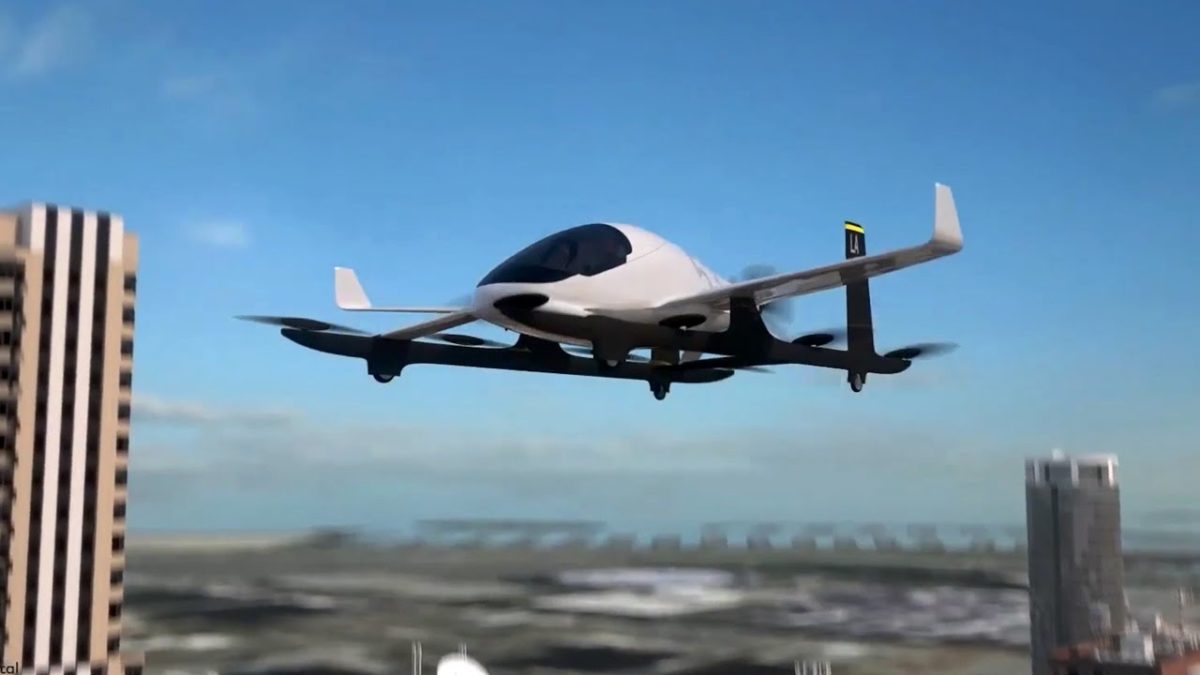Yesterday, the German startup Volocopter, which is backed by Daimler, made the debut of the first electric vertical takeoff and landing (eVTOL) flight above a European city. eVTOL aircrafts are currently being developed for the purpose of creating air taxi services in urban areas. Companies are using traditional drone technology to create vehicles that are safe enough for passenger transportation above ground. In China, advances in the eVTOL market are already substantial. The Chinese start up EHang, which develops and deploys autonomous air vehicles, will soon begin to pilot the transportation of residents in the Chinese metropole Guangzhou. The launch is made possible through a central traffic management hub, which is developed by EHang and the local Guangzhou government and which will control and monitor the eVTOL network.
Although substantial advancements in eVTOL technology have been made, there are several barriers that still need to be overcome. The four top concerns in urban mobility are:
1. Noise: rotor tip speeds need to be reduced to decrease noise levels comparative to helicopters
2. Energy management: concerns about pollution should be addressed through the application of electric powering
3. Cost: costs need to be reduced to foster widespread consumer acceptance and ability of use
4. Safety: advanced detection and collision systems are needed, as well as general air traffic management systems
Firms need to capitalize on cutting-edge technologies such as artificial intelligence, machine learning and high-performance computing, as well as leverage developments in autonomy, to begin to surmount some of the barriers named above. Furthermore, partnerships and collaboration between industry players, as well as with local governments are needed to exploit substantial opportunities.
While it may still take substantial time for us to be able to fly to university here in the Netherlands, this may soon become reality for students in China.
References:
Etherington, D. (2019). Autonomous air mobility company EHang to deploy air shuttle service in Guangzhou – TechCrunch. [online] TechCrunch. Available at: https://techc
runch.com/2019/08/09/autonomous-air-mobility-company-ehang-to-deploy-air-shuttle-service-in-guangzhou/ [Accessed 17 Sep. 2019].
Figure Source: Lineberger, . (2019). Technological barriers to the elevated future of mobility. [online] Deloitte Insights. Available at: https://www2.deloitte.com/us/en/insights/focus/future-of-mobility/future-transportation-with-vtol.html [Accessed 17 Sep. 2019].
McKinsey & Company. (2019). Air-mobility solutions: What they’ll need to take off. [online] Available at: https://www.mckinsey.com/industries/capital-projects-and-infrastructure/our-insights/air-mobility-solutions-what-theyll-need-to-take-off [Accessed 17 Sep. 2019].
Poulton, G. and Walker-Jones, O. (2019). Looking at the future of urban air mobility. [online] Roland Berger. Available at: https://www.rolandberger.com/de/Point-of-View/Looking-at-the-future-of-urban-air-mobility.html [Accessed 17 Sep. 2019].


Very interesting point and I believe a fascinating piece of technology. Flying in small drones certainly must feel like living in a science fiction movie. However I believe, that we are still many years or rather decades away from this becoming a reality.
My concerns about this topic are not really about the technology, but stemm from the lacking trust and acceptance by the public and various governments. Already today, autonomous vehicles (on the street, not in the air) are safer than cars driven by humans, however with the exception of some pilot projects, fully autonomous vehicles are not allowed on most public roads yet, due to laws and regulations. This in my opinion, is a good example, that not technology, but the public trust and traditions are the biggest issue in driving this kind of innovation forward. Due to the fact, that air traffic is significantly heavier controlled than normal traffic on the streets and aviation safety is a major public concern, I believe that unfortunately will are still many years away from this becoming a reality (even though I really hope that we will soon be able to experience it).
Hi Lukas, thanks for you comment! I agree, acceptance is a huge factor that still needs to be overcome and your example with autonomous cars really puts this into perspective.
This is a great choice of a topic. Unfortunately, in reality air taxis only address one issue we are currently facing regarding traffic: the “overload” of streets. As you said, the most essential traffic and urbanization problem is not really solved: the environmental pollution. Is it really feasible to implement air taxis with electric powering? And how high is the durability of such taxis? Furthermore, it is hard to imagine how the cost reduction will be achieved. Due to the immense investments needed for changes in infrastructure, high-technology and especially testing, I believe that air taxis (if implemented some day) will take a significant amount of time until they are affordable, even for wealthier parts of society. Finally, with all the challenges in the area of autonomous and environmentally friendly driving, for me it is very hard to imagine that air taxis are able to deal with these implementation issues more easily. Even though, it is a very interesting technology, I feel that until now it does not solve enough of today’s most pressing challenges.
Hi Sophie, thanks for your comment! You are right, environmental pollution is a big problem that needs to be tackled, especially with the increased public awareness about this topic in recent years. There are however already some developments for electric flight taxis, such as the Lilium Jet. But like you said, affordable deployment of these eVTOLs will still take substantial time, especially as concerns such as infrastructure changes and implementation issues are yet to be addressed.
Hi Noelle, I really like your futuristic perspective on mobility in the future. Although it is uncertain when we will be able to fly to university, I think it is quite certain that it will happen first in China. What we are still missing in the Western World are governments that are favouring new technologies and indeed, the public that embraces technology instead of constantly worrying about it. In China, this is a different story, technologies are developed and embraced way faster, people adopt it rapidly and most importantly, the government is highly supportive of it. I think in terms of technological development and innovations, the Chinese way is what we should strive for sometimes.
Hi Eva, thanks for your insight!